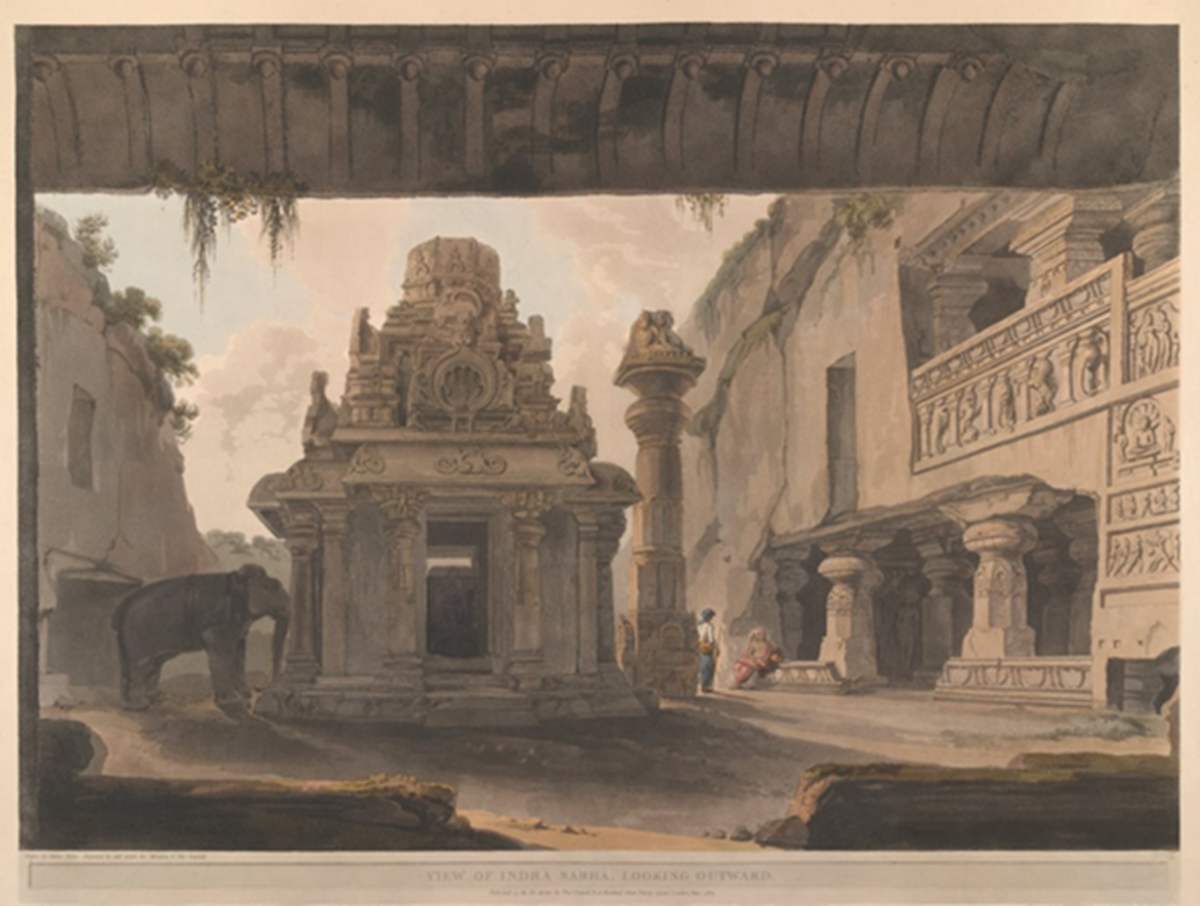View of Indra Sabhâ, Looking Outward
- Engraving
- James Wales, Daniell Thomas
Ellora Caves, Aurangabad, Maharashtra, 9-10th centuries
Ellora in Maharashtra, India is one of the most impressive rock-cut sites with a total of 32 caves belonging to the Hindu, Buddhist and Jain traditions and ranging from the 6th to the 10th centuries. Recent research has revealed that these caves were likely developed simultaneously with artists moving back and forth between these spaces, imbuing them with visual vocabulary shared by various traditions. Supported by royal and lay patrons, a total of five Jain caves (no. 30-34) are carved towards the north of the site. The caves are richly sculpted and painted and feature Jinas, Jain deities and many representations of Bahubali, the son of the first Jina Rishabha. Bahubali, a popular figure in Jain devotional culture is differentiated from other Jinas through his iconography as he is shown standing in meditation with vines creeping up his legs, indicating the vast amount of time he spent meditating before he reached omniscience.
Seen here is a view of the inner courtyard of Cave 32 also known as Indra Sabha, comprising within it a complex of caves. This is a monolithic shrine, with a pyramidal superstructure topped by an octagonal roof standing in the middle of the courtyard. Enshrined here is a sarvatobhadra or four-faced sculpture with four Jinas seated back-to-back facing the four cardinal directions. This is reminiscent of the samavasarana, the assembly of the Jina created by celestials for his sermon upon achieving omniscience.
- Created: 1804
- Attribution: British Library Archive (X432/6(7))
